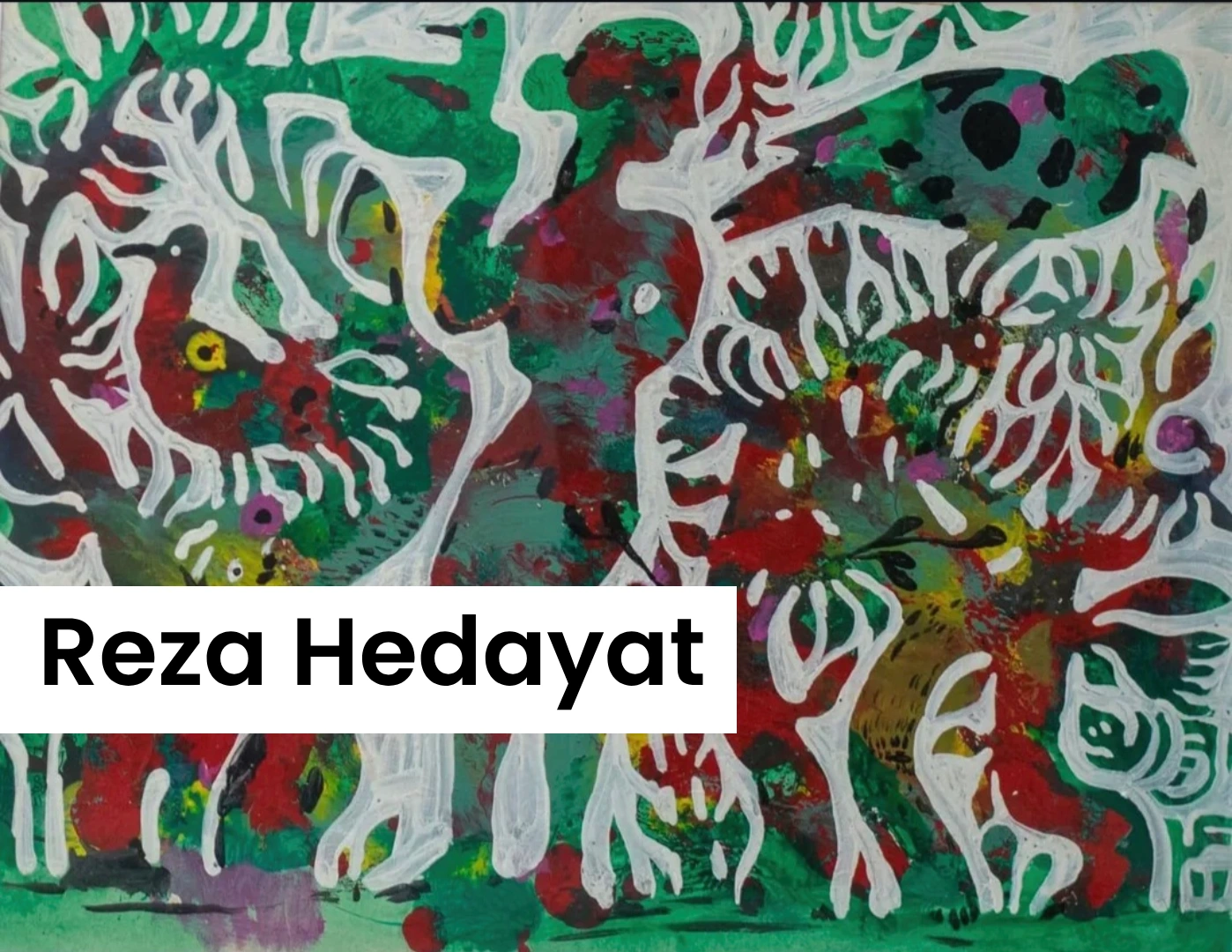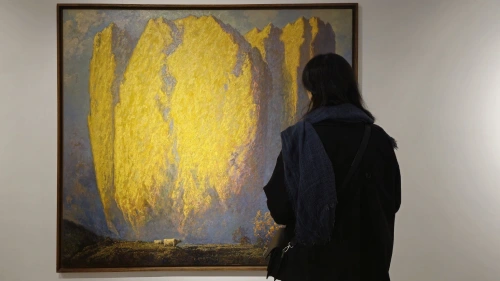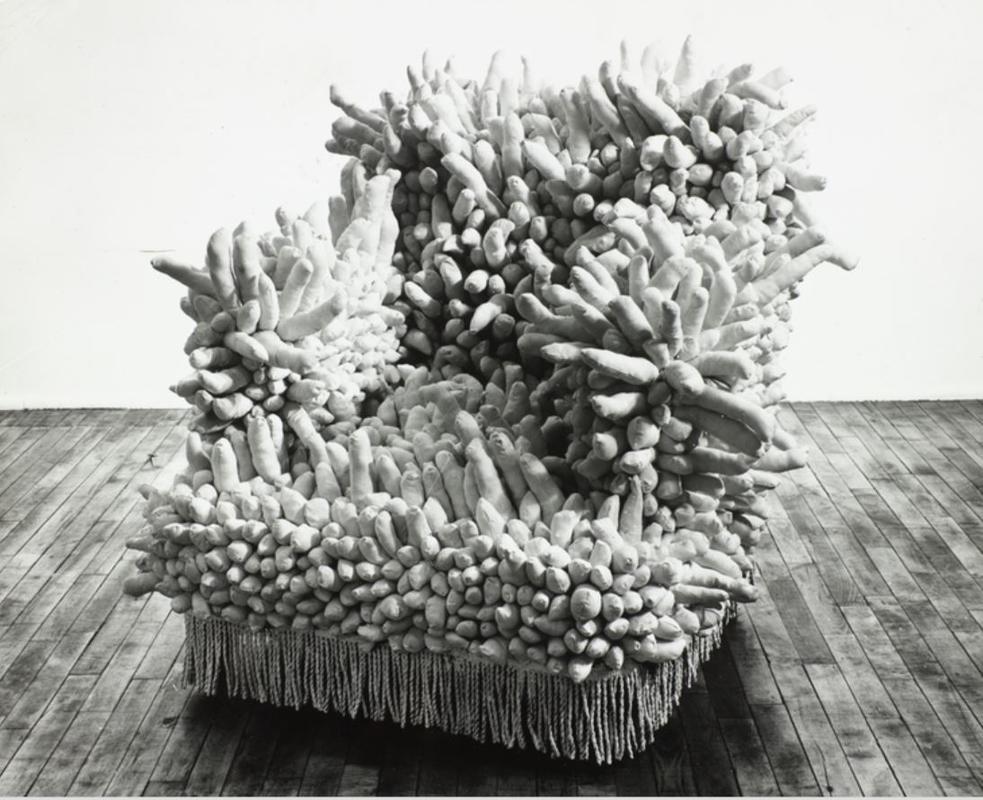The Power of Touch and Gaze: Amoako Boafo
A Ghanaian Visionary Reshaping Contemporary Portraiture
Amoako Boafo (1984) is a Ghanaian artist who has significantly influenced contemporary portraiture, reshaping cultural narratives within Africa and the African diaspora. His innovative approach to portraiture, using his fingers instead of traditional brushes, allows for a tactile connection between the artist and subject, conveying emotional depth and personality.[1] Boafo moved to Vienna in 2013 and was introduced to European portraiture while also facing racial marginalization within the Austrian art world. His experience of rejection in Europe sparked a desire to celebrate Black culture and identity through art in a way that resonated with his own vision of their strength, beauty, and complexity.[2] This deepened sense of purpose is reflected in the emotional intensity of his work. Boafo’s experience of exclusion ignited a profound desire to reclaim Black identity through his art, challenging the narratives that have often reduced Black figures to stereotypes or tragedy. His use of color and form reflects this desire—transforming traditional portraiture into a powerful celebration of his subjects' individuality.[3]
Transcultural Synthesis: Merging Ghanaian Heritage with European Art History
His work merges his Ghanaian heritage with European art history, challenging the exclusion of Black artists from traditional Western art spaces. His portraits highlight the strength and beauty of Black individuals, defying stereotypes and celebrating their presence. Influenced by artists like Gustav Klimt, Egon Schiele, and Kehinde Wiley, Boafo weaves elements from these iconic figures into his own vision. For example, while Klimt’s ornamental style and use of gold leaf are clearly present in some of Boafo’s work, Boafo reimagines these elements as empowering symbols, not just decorative accents. Similarly, where Kehinde Wiley’s portraits of Black figures reclaim the space of classical portraiture, Boafo goes a step further by using his fingers to create intimate, tactile connections that communicate a deeper emotional bond between the subject and the viewer.[4] In this, Boafo’s work actively centers Black subjectivity, joy, and the Black gaze, allowing the figures to assert themselves with confidence and presence, rather than being viewed as passive subjects. In doing so, Boafo merges historical and contemporary influences into a distinctive style that emphasizes confidence, style, and individuality.[5]
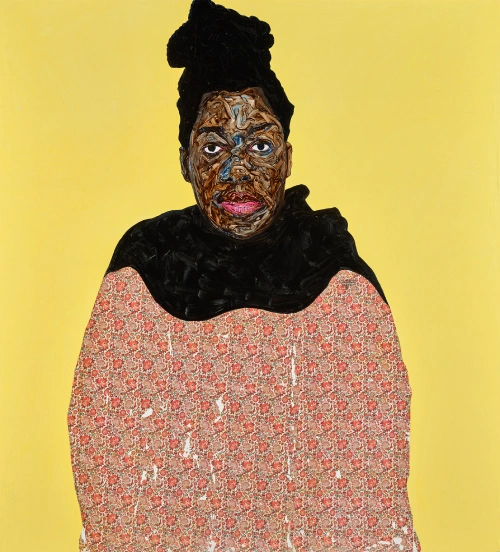
Fig. 1. moako Boafo, Enyonam’s Black Shawl, 2020, Oil and paper transfer on canvas.
In his practice, Boafo uses color not only as a visual tool but also as a form of communication, reflecting moods and emotions within his subjects and his own artistic process. His finger-painted portraits push the boundaries of conventional portraiture, blending painting with sculptural elements to create expressive and dynamic works (Fig. 1, 2020).[6] His expressive portraits of friends and acquaintances highlight the richness and diversity of Blackness while challenging media and cultural misconceptions that dehumanize Black individuals.[7]
Institutional Breakthrough: Proper Love at the Belvedere Museum
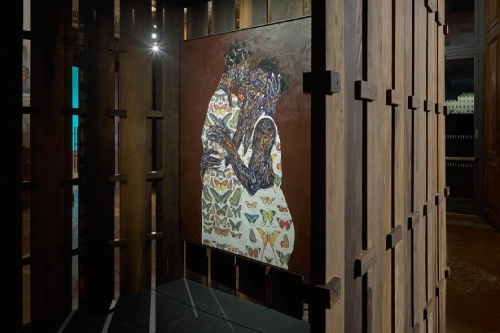
Fig. 2. Amoako Boafo, Papillon Hug, 2024, Oil and paper transfer on canvas.
The Proper Love (Fig. 2, 2024), exhibition at the Belvedere Museum in Vienna, Austria, marks a pivotal moment in Boafo’s career. It is his first solo show in a major European institution, representing a major milestone in his artistic journey. This exhibition expands Boafo’s exploration of Black identity by focusing not only on individual strength but also on the collective experience of Blackness. While his earlier portraits focused on individual strength, Proper Love expands these themes into a collective experience, inviting viewers to witness the emotional resonance and complexity of Blackness on a larger scale. Featuring over sixty works, the exhibition explores themes of intimacy, Black identity, and representation. Boafo’s use of his fingertips in painting figurative portraits shifts the gaze away from the historical White-dominated narratives of Black bodies, instead presenting his subjects—his community—as confident, bold, and vulnerable. This method emphasizes a personal connection with his subjects, drawing viewers into the emotional depth and joy of the Black experience.[8]
His exhibition includes a new work, Papillon Hug, displayed within the Volta Pavilion, a structure crafted from reclaimed timber sourced in Ghana. This pavilion symbolizes the fusion of African and European cultural legacies, enhancing the viewer’s connection with Boafo’s art.[9] By incorporating this unique architectural element, Boafo challenges traditional representations of Blackness, allowing his work to be viewed on its own terms.[10] The pavilion invites a dialogue between African and European cultural histories, while the juxtaposition of Boafo’s art with iconic European masterpieces like Gustav Klimt’s The Kiss encourages a broader conversation about the shared histories of Black and European art.[11]
Redefining Black Representation Through Tactile Intimacy
Ultimately, Proper Love redefines how art can be experienced, promoting a deeper understanding of Black identity, community, and the importance of self-representation. In Boafo’s work, the focus is not just on how Blackness has been historically marginalized, but on how it can be celebrated, revered, and viewed with the same dignity as any other cultural narrative. Boafo’s practice serves as an act of self-preservation, a powerful tool to assert Black humanity, and an invitation to all viewers to engage with Black identity on its own terms.[12]
Essay by Malihe Norouzi / Independent Art Scholar
References:
1. Boafo, Amoako, "A.M. Journal Spread", Mariane Ibrahim Gallery, (accessed 13 February 2025).
2. Boafo, Amoako, "Untitled", Phillips Auction House (accessed 13 February 2025).
3. Boafo, Amoako, "Exhibition: Amoako Boafo", Contemporary (accessed 13 February 2025).
4. Boafo, Amoako, "A.M. Journal Spread", Mariane Ibrahim Gallery (accessed 13 February 2025).
5. Boafo, Amoako, "Exhibition: Amoako Boafo", Contemporary (accessed 13 February 2025).
6. Boafo, Amoako, "A.M. Journal Spread", Mariane Ibrahim Gallery (accessed 13 February 2025).
7. Boafo, Amoako, "Untitled", Phillips Auction House (accessed 13 February 2025).
8. Boafo, Amoako, "Proper Love: Amoako Boafo's Exploration of Representation, Intimacy, and Black Identity at the Belvedere Museum", Elephant Art (accessed 13 February 2025).
9. Ibid.
10. Boafo, Amoako, "Exhibition: Amoako Boafo", Contemporary (accessed 13 February 2025).
11. Boafo, Amoako, "Proper Love: Amoako Boafo's Exploration of Representation, Intimacy, and Black Identity at the Belvedere Museum", Elephant Art (accessed 13 February 2025).
12. Boafo, Amoako, "Exhibition: Amoako Boafo", Contemporary (accessed 13 February 2025).
Image Resources:
1. Boafo, Amoako. (2020), Enyonam’s Black Shawl. (Accessed 13 February 2025).
2. Boafo, Amoako. (2024), Papillon Hug. In: Amoako Boafo [Exhibition]. Belvedere Museum, Vienna. (Accessed 13 February 2025).
Image Cover Resource:
Centre Pompidou (2024) "In his portraits, Amoako Boafo works the flesh with his fingers..." [Threads post]. (Accessed: 13 February 2025).

